The use of Artificial Intelligence in Learning and Development has in recent years received both hype and criticism. One of the most popular innovations that were up for discussion included creating AI avatars that would make learning even more engaging and offer such benefits as personalized learning, and scalable video modules. However, AI-based learning has raised some common AI Avatar concerns patterns among some educators and learners. Ranging from threats of job loss to concerns over data protection, these issues surrounding AI avatars will be discussed in this article. We will discuss in detail the potential of AI avatars to demonstrate the positive effects on learning which answers to the common AI Avatar concerns.
1. Lack of Human Connection
Concern: “AI avatars just don’t connect like human instructors. They lack empathy and adaptability, making it hard to feel engaged or trust what I’m learning.”
Rebuttal: While it’s true that AI avatars may not replicate human interaction perfectly, they are designed to simulate engagement through personalized responses. Advanced algorithms allow these avatars to adapt to learner preferences over time, creating a sense of connection. Interactions with avatars can be more personal if the avatar adapts to the student, having data on the individual learning preferences, thus perceived relevance is significantly enhanced. In addition, with time and advancement in technology, the interactions between humans and avatars are closing making avatars offer an encouraging learning environment to complement the usual human instruction.
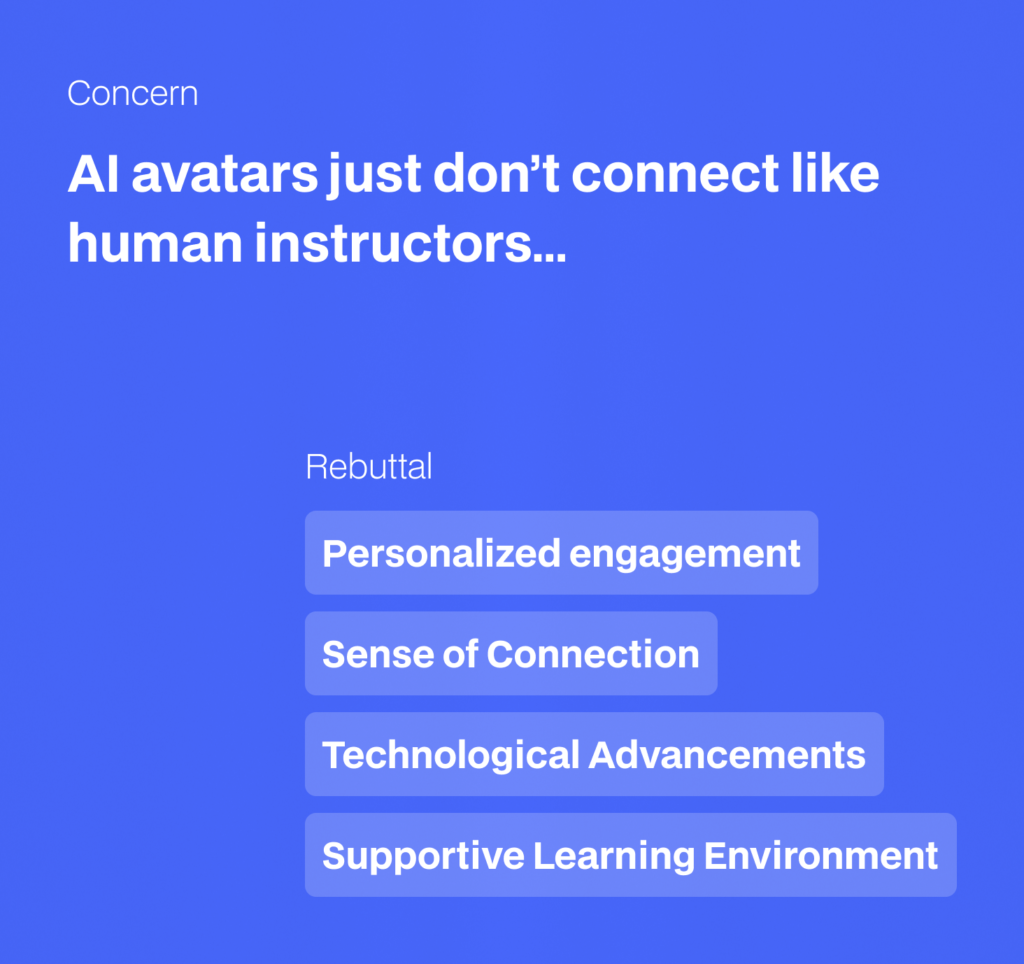
2. Lack of Perceived Expertise and Authority
Concern: “I trust human instructors for their real-world experience. AI avatars lack the authority and credibility I expect, especially on complex topics.”
Rebuttal: While it’s understandable that learners place trust in human instructors due to their expertise, it’s important to recognize that AI avatars can still deliver valuable educational experiences in specific contexts. In the same way that microlearning is not well suited for all learning solutions, AI avatars are most appropriate for specific contexts, like teaching basic concepts, products, or consistently presenting information to large multi-lingual audiences. Incorporation of the AI avatars in a blended learning environment that comprises both AI and human tutors, the organizations will be in a position to maximize the benefits of each of these as learners will receive accurate information concerning a specific topic, although when making decisions, they will be dealing with AI tutors who have probably been initialized by human beings with adequate experience in the specific area of study.
Moreover, there is always human intervention when it comes to the educational process. While the statement is given by the avatar, a qualified expert works on constructing the script in order to reach the recipient with accurate information. The use of the avatar comes in handy to ensure that there is communication between this expert and the learner without having to compromise on video quality. The utilization of AI avatars alongside human tutors will serve as a reinforced model that will allow avoiding drawbacks of each type of learning while strengthening the given model’s advantages: credible and personalized information provided to learners and concerns regarding the avatar’s identity as a competent source of information.

3. Concerns About Authenticity
Concern: “Content from avatars feels robotic and insincere, which makes me sceptical about its authenticity.”
Rebuttal: AI avatars can be programmed with scripts that incorporate authentic and relatable content, designed to resonate with learners. Moreover, advancements in natural language processing will eventually significantly improve how AI communicates, allowing avatars to engage in fluid and natural speech, which will be undistinguished from a human speaker. This capability enhances the overall learning experience, making it feel more authentic. By continually refining the content and delivery methods, AI avatars can foster a sense of genuineness that learners appreciate.
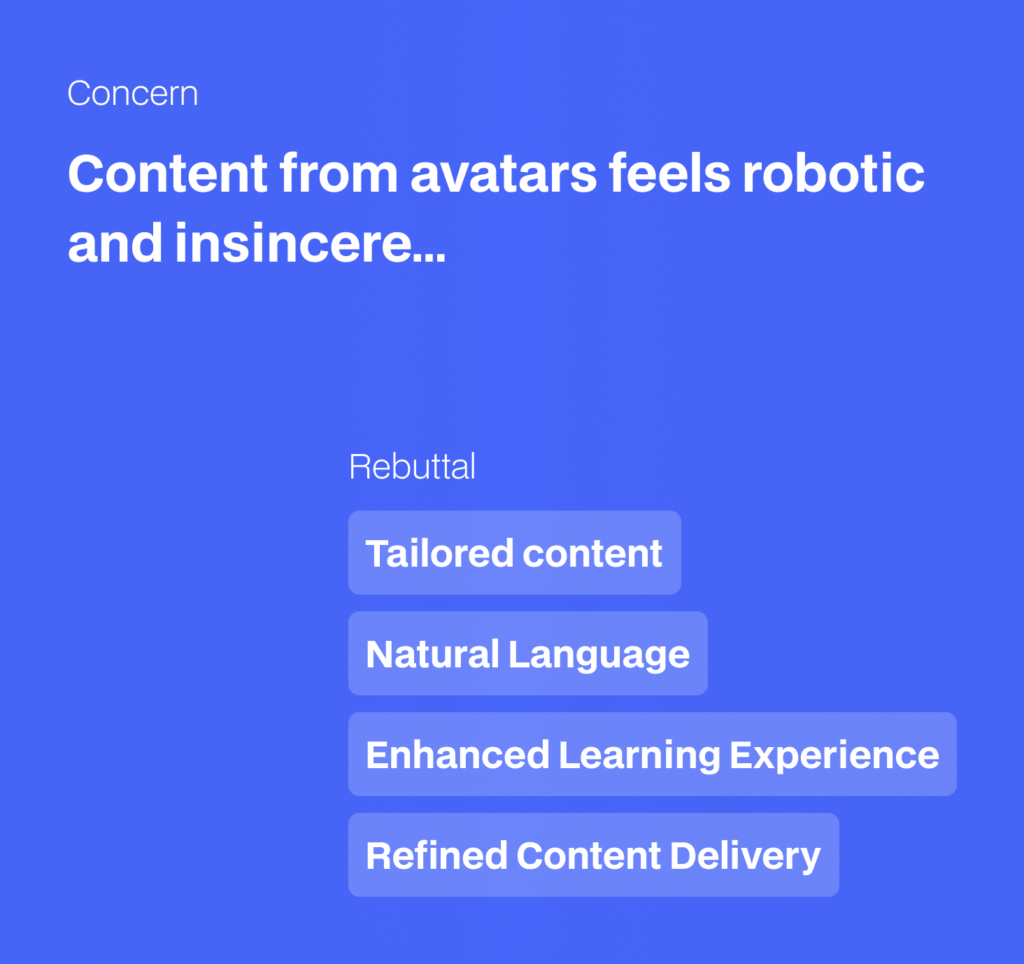
4. Lack of Emotionality and Realism
Concern: “When creating videos with avatars, I worry about their lack of emotional expression and robotic movements. I fear that once learners realize the video isn’t presented by a human, they will feel deceived and lose interest.”
Rebuttal: Although some of the first AI avatars may not accurately depict emotions or move naturally, AI has come a long way and avatars look and move much better now. Modern AI avatars may have realistic facial expressions and body language which increases their credibility and attractiveness to the audience. Also, letting users know that they are communicating with an avatar can help manage expectations in case they are surprised or sceptical. This way, creators will be able to avoid controversies around the authenticity of avatars.
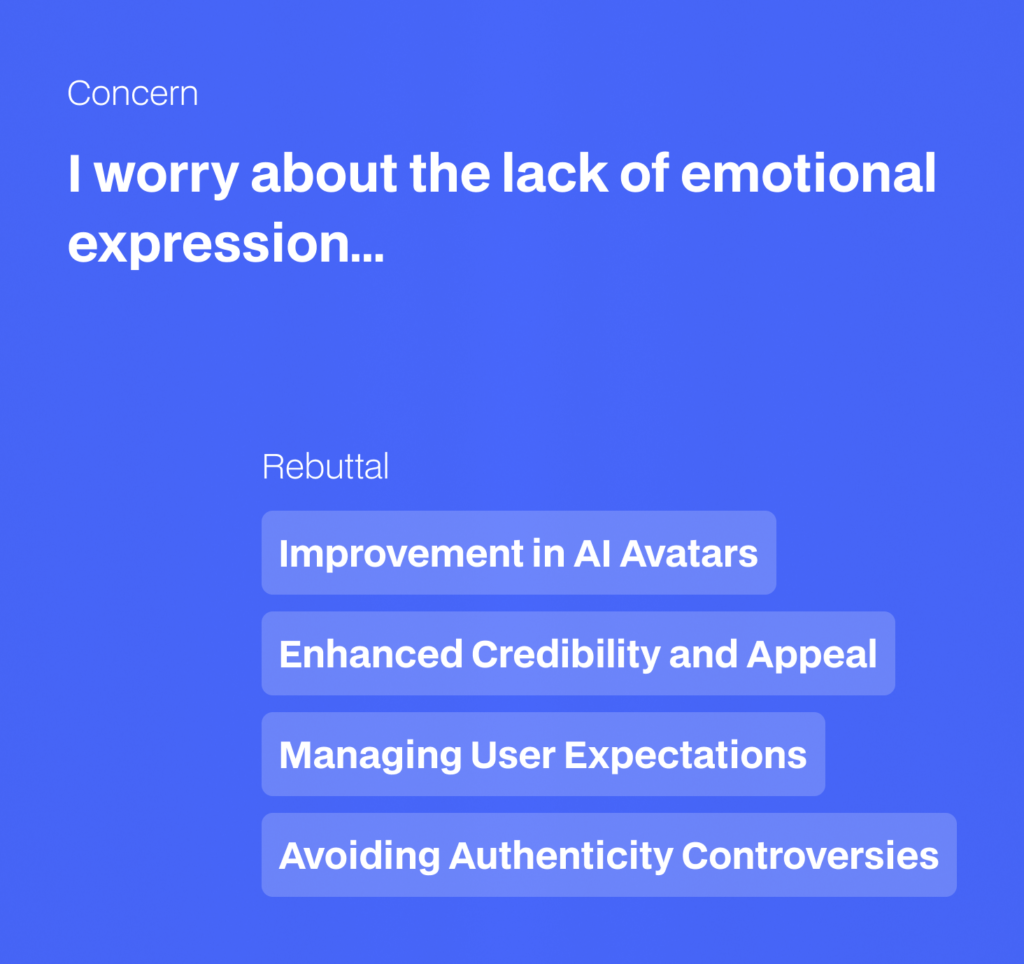
5. Fear of Job Displacement
Concern: “I worry that AI avatars might replace educators and facilitators, threatening my job security.”
Rebuttal: AI avatars are designed to work as teaching assistants and not as substitutes for human professors. It means they can perform routine functions like sharing simple information or making preliminary evaluations of the situation, so the educators themselves can concentrate on more individualized communication and impactful assignments. This change allows the instructors to participate in higher-order activities such as teaching, training and coaching the students thus improving the quality of learning. As AI is implemented as an augmentation tool, organizations are able to enhance the position rather than depersonalize educators.
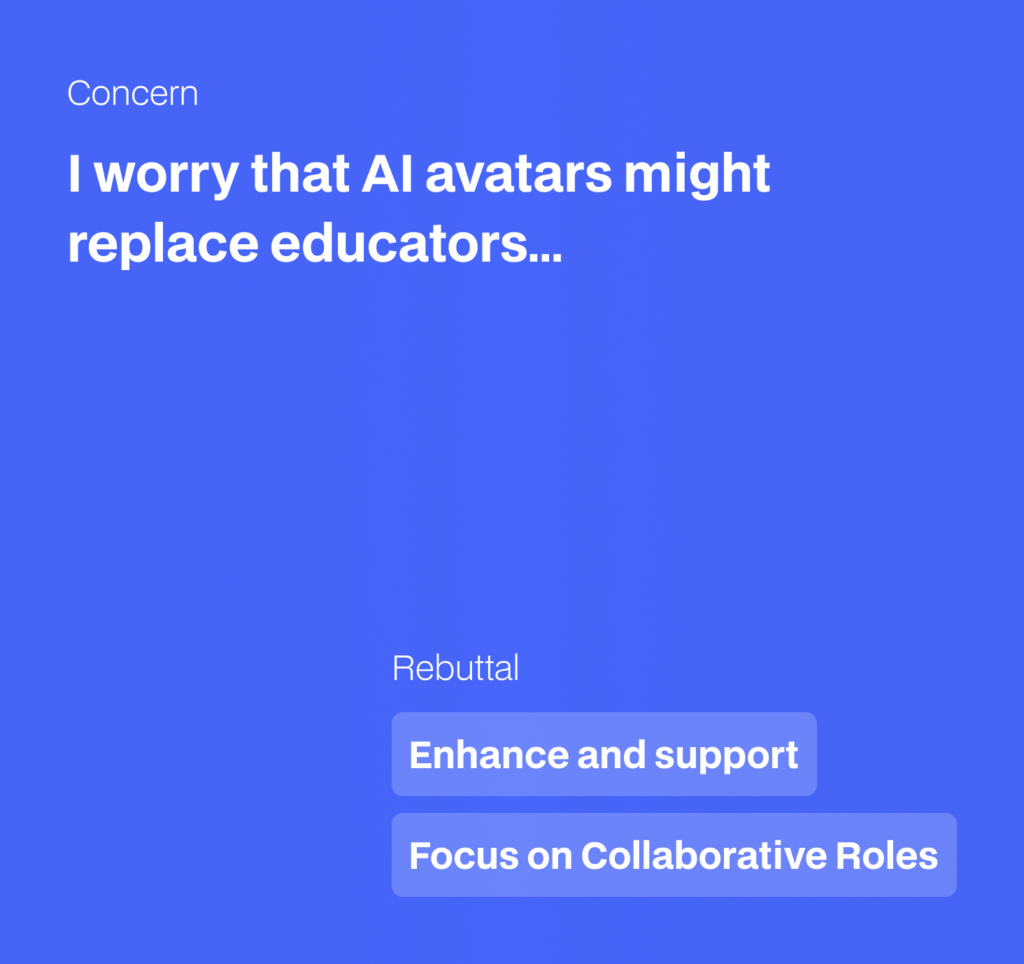
6. Data Privacy and Security
Concern: “AI accessing personal data for customization raises serious privacy concerns, especially with sensitive information.”
Rebuttal: Strong security features and measures, as well as compliance procedures, are in place to safeguard learners’ data at Elai. Also, content creators are empowered to determine what data is to be fed to AI systems, which empowers users to control data. ANother common myth is that systems use clients’ data to train avatar models, when in fact it’s not the case at all. Following data protection principles, educational institutions can leverage the use of AI avatars, while always being mindful of the learner’s privacy.
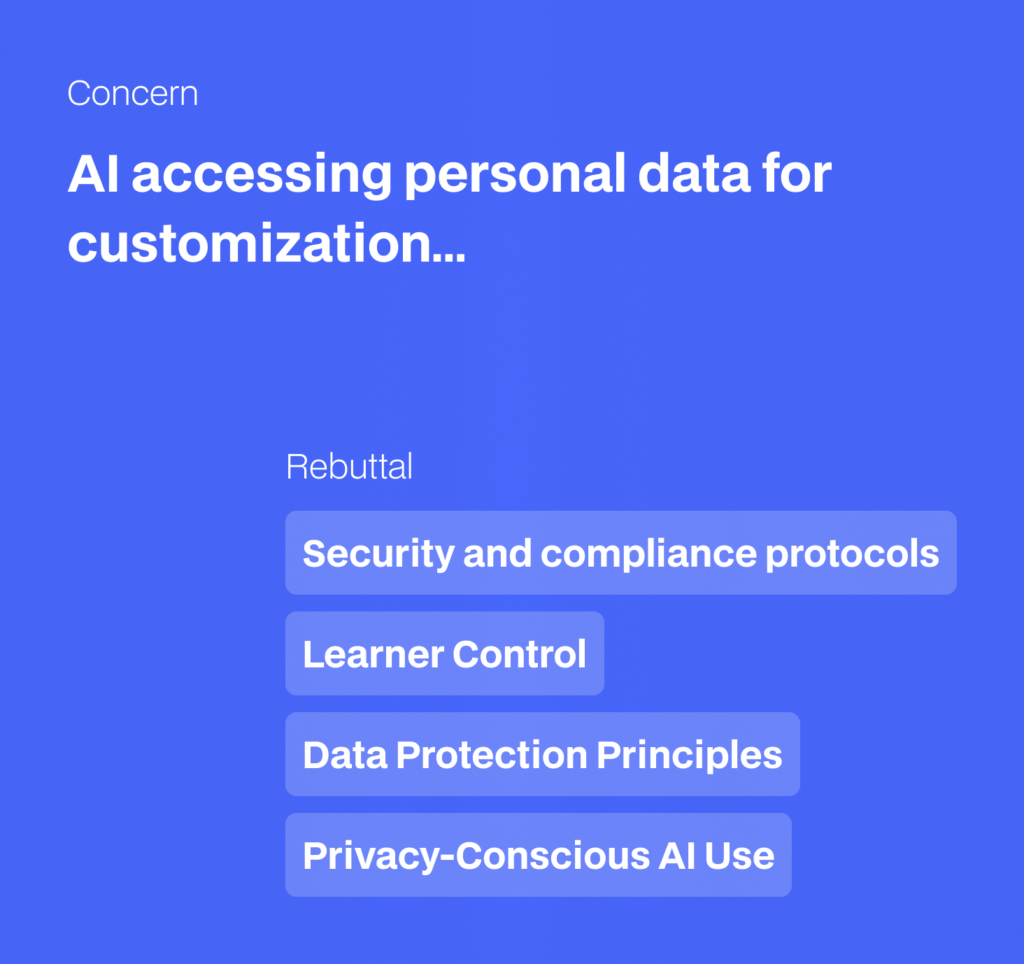
7. Potential for Bias and Misinformation
Concern: “I’m concerned that AI can reinforce biases or spread misinformation, misleading learners.”
Rebuttal: AI models can be trained using different sets of data to decrease bias and increase accurate results. Organizations are becoming more aware of the ethical implications of AI and we are taking steps to ensure the models are trained on inclusive data. Also, constant supervision ensures that any arising bias is detected and prevented from affecting the outcome of a particular decision. AI is capable of enriching the learning experience when supervised by human beings and ensuring the integrity of the information provided to the learners.
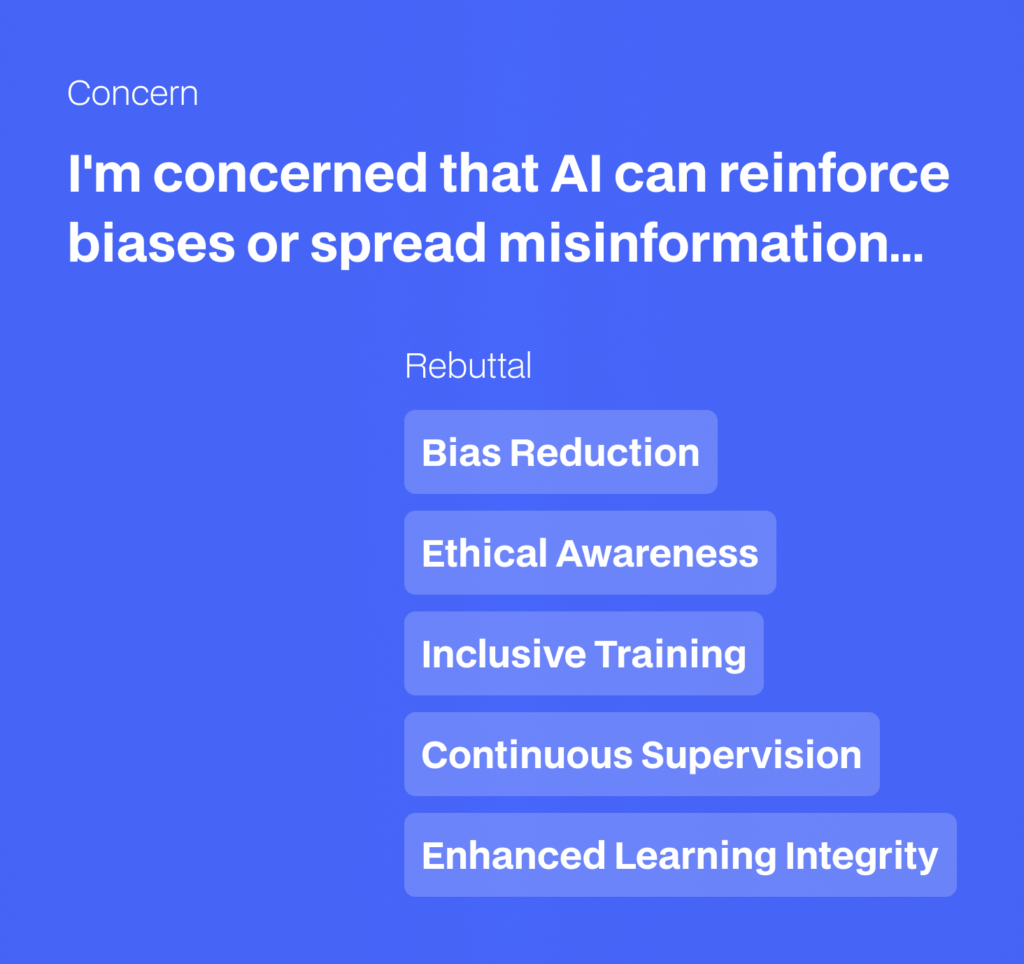
AI avatars, as they further develop, can greatly influence the field of L&D and education. Although there are questions regarding human relations, sincerity, and employment, these concerns are possible to tackle already and they can’t overshadow the positive outcomes that AI integration brings to the learning process. AI avatars have an opportunity to be student-centric, fun, and highly effective learning partners with human educators and learners. In responding to these AI Avatar concerns, it will be important to maintain a clear line of communication and to continue the conversation regarding this new frontier in education. Lastly, it becomes possible to state that using the system of interaction between artificial intelligence and human instructors can result in an increased effectiveness of learning processes for everyone.
